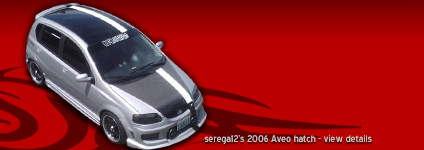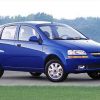Ok, here's the problem(s). I'll do this chronologically so its easier to follow:
About 6 months ago, I started to get a "wobble" in my steering wheel. Had it at all speeds, but really noticeable at about 25 to 40 mph. I also noticed when taking corners, but really was always there.
Took the car in for a tire balance and was told the car is out of alignment - getting premature wear on the outside of the front tires.
I took the car home, jacked up the front and looked at front suspension. Tie rods looked good, as did the ball joints, but a front bushing was loose on one of the control arms. Okay, I replace both control arms (with ball joints) and torque everything to spec, then take it in for an alignment.
Took the car to a local trusted shop for an alignment. Alignment was adjusted (front toe adjusted and the rear right suspension was shimmed) - shop owner told me that the tires were toast and said he could not balance them. He concluded that the "wobble" in my steering was from bad tires (Michelin Pilots at end of their life).
When I got the car home, I checked the lower control arms for tightness. The arms were torques correctly, but I discovered that one of the ball joints was not tightened on the arm from factory (Moog arms that came with ball joints). So, one alignment down the drain (a bit of play due to the loose ball joint)
Ok, get new tires (Nexen D5000's). No new alignment yet. Car drives perfect. No wobble, shimmy or anything. Drives like new.
Worried about a potential alignment problem due to the loose ball joint, I took the car to a local GM dealer for an alignment this time (cheaper and close to work). I was told that a strut was leaking oil and a stabilizer bar link was loose (odd that the other shop didn't find this). GM shop said that both did not need replacing yet, but will soon. I said to proceed with the alignment and I will fix the strut and link later. The GM tech tells me that the toe on the alignment was out and the right rear needed shims (the one that was fixed by the other shop).
After the GM alignment, I immediately noticed a slight wobble. I also felt something like a bounce (almost like a failed strut letting the tire bounce). Its been two weeks and its getting worse.
I checked the suspension again today - nothing looks wrong. Control arms, ball joints, tie rod ends, wheel bearings - all seem good. Perplexed, I'm taking the car in to the tire shop today to have a look at the wheel balance. Thats the only thing I can see out......
OR - there is something drastically wrong with my front end that will not keep the front end in alignment and is prematurely wearing the tires. If the tires won't balance (or the balance does not correct the problem), then I need HELP!
Sorry for the long winded story!



 LinkBack URL
LinkBack URL About LinkBacks
About LinkBacks

 Blue Smartie
Blue Smartie
 Reply With Quote
Reply With Quote